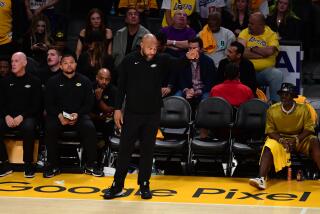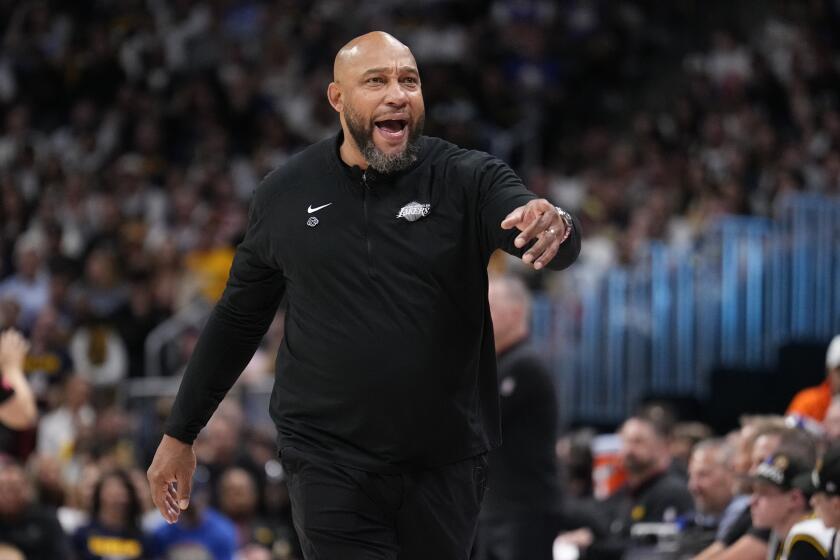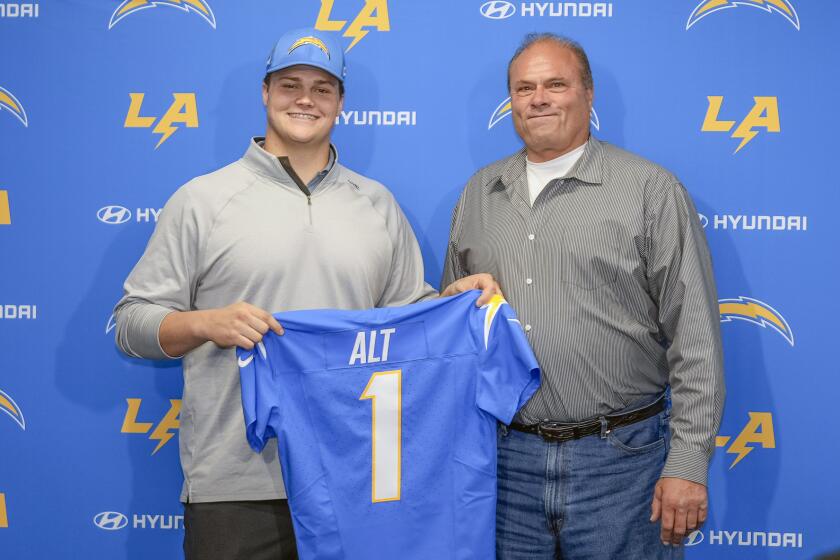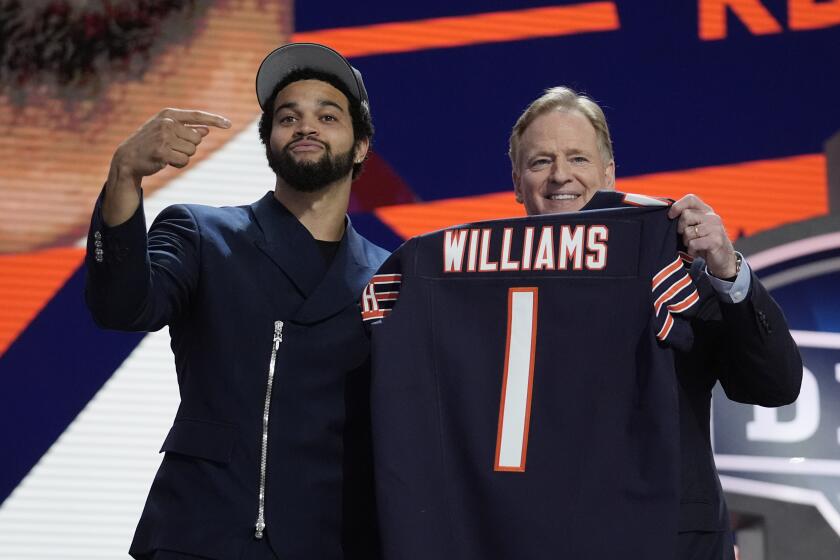This is not child’s play
For years, professional basketball and baseball leagues have permitted teenagers to be drafted, some of whom -- Laker Kobe Bryant among them -- eventually became superstars. Thus far, injuries among elite teen athletes have been scarce.
That could change if high school players or college underclassmen are allowed into the National Football League.
The NFL gate to teens swung open earlier this month when a federal judge struck down a long-standing league rule prohibiting a player from joining a team until three years after high school graduation. If the ruling stands, the NFL will be the last of the major professional North American sports to allow young players into their ranks.
But these young players may find that the NFL -- though more lucrative than high school football -- demands more than they can physically, or mentally, deliver.
“Basketball is more a skill sport. You don’t have to have the physical strength you need to bang around with the bigger folks in NFL,” said Dr. Richard Kreider, head of the Center for Exercise, Nutrition and Preventive Health Research at Baylor University in Waco, Texas. “There’s a natural maturation process that still has to occur, and I just don’t think a high school kid is going to be able to handle the physical trauma.”
Men’s bodies, which usually don’t finish developing until their early or mid-20s, are particularly vulnerable to injury at this age, exercise physiologists say. This lack of maturity doesn’t pose much of a problem in limited-contact sports such as basketball and baseball. But with the tackling and pounding inherent in pro football, there’s a much greater risk of injury.
College football gives young players time to put on the muscle mass they will need to compete -- and protect their bodies -- in the NFL. Depending upon the position, college players who want to play professional football typically gain 20 to 40 pounds in muscle alone -- absolutely essential to enduring the punishment of the NFL.
“If you think about a 250-pound guy who can run a 4.4 [second] 40 [yard dash] and look at the physics of the impact, it could be catastrophic for a person who’s not physically ready to play in the NFL,” said Jeffrey A. Potteiger, chairman of the department of physical education, health and sports studies at Miami University in Oxford, Ohio.
More worrisome, said Dr. Robert Girandola, an associate professor of kinesiology at USC, is that a young player’s skeleton -- even into his late teens and early 20s -- may not be fully formed. Testing for skeletal maturation is extremely difficult and expensive, and ordinary physical exams don’t determine whether a player’s bones have fully hardened.
A player whose skeleton is still forming could suffer sufficient trauma in football to stunt further bone development, tear muscle from the bone and sustain a permanently debilitating injury, he added. Girandola, who has worked with college football players for three decades, has seen injuries in college that if replicated in the pros -- factoring in the players’ additional weight and speed -- would have resulted in severe injuries to the spinal cord.
“College is the proving grounds of what goes on in the pros,” said Girandola. “I’ve seen some horrible injuries at USC, but I can’t imagine what might happen to a high school kid at the pro ranks.”
The jump between high school and pro football is enormous in more ways than just physical size and speed. The schedule is almost twice as long -- against competition that is infinitely more fierce. High school football usually has a couple of weeks of preseason training and roughly 10 games. In the pros, preseason training can last eight weeks or more, and the regular season is 16 games, more if the team advances to the playoffs.
Finally, even if a young player has the physical capabilities, it doesn’t necessarily mean he has the skill level or mental maturity to succeed in the pros. The competition in high school can’t compare to the NFL, where every player -- not just one or two as in high school -- is a standout athlete.
“There’s such a huge jump between high school and college. There’s an even bigger one from college to pros,” said Kreider, a former college football player. “I doubt whether any kid is going to have the mental and knowledge base to compete at that level.”
Added Girandola: “It doesn’t seem like the smart thing to do for them.... I mean, the pros are dog-eat-dog, they will kill those young guys, they’ll knock their heads off, they don’t care. It’s their job.”
More to Read
Get our high school sports newsletter
Prep Rally is devoted to the SoCal high school sports experience, bringing you scores, stories and a behind-the-scenes look at what makes prep sports so popular.
You may occasionally receive promotional content from the Los Angeles Times.






